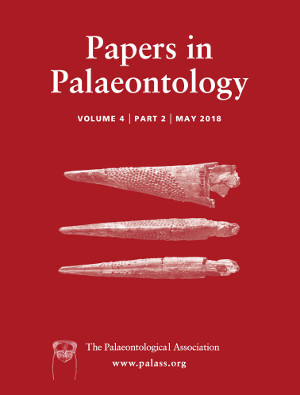Reg. Charity No. 1168330

The pareiasaur fossil record in China is poor compared to that of Russia or South Africa. A new pareiasaur specimen is here reported from the upper Permian Naobaogou Formation of the Daqing Mountains, Nei Mongol, China. It is recognized as a new species of Elginia, a taxon otherwise known only from the upper Permian Cutties Hillock Sandstone of Scotland. Diagnostic features include a moderately developed cheek flange; prominent otic notch (formed between squamosal and quadratojugal at the posterior margin of the temporal plate); enlarged supraorbital bosses on prefrontal, postfrontal and postorbital; a hypertrophied supratemporal horn, and squamosal horn prominently projecting posteriorly from caudal margin of temporal plate. The new taxon is differentiated from E. mirabilis by a well‐developed and crescentic postfrontal boss, which is the largest among a series of circumorbital bosses; upper orbital border distinctly domed with a smooth rather than angled anterodorsal margin; lesser developed cranial bosses, basal confluence of the transverse process and postzygapophysis forms a horizontal flange in some dorsal vertebrae. The new discovery significantly extends the geographical distribution of Elginia and Elginiidae.